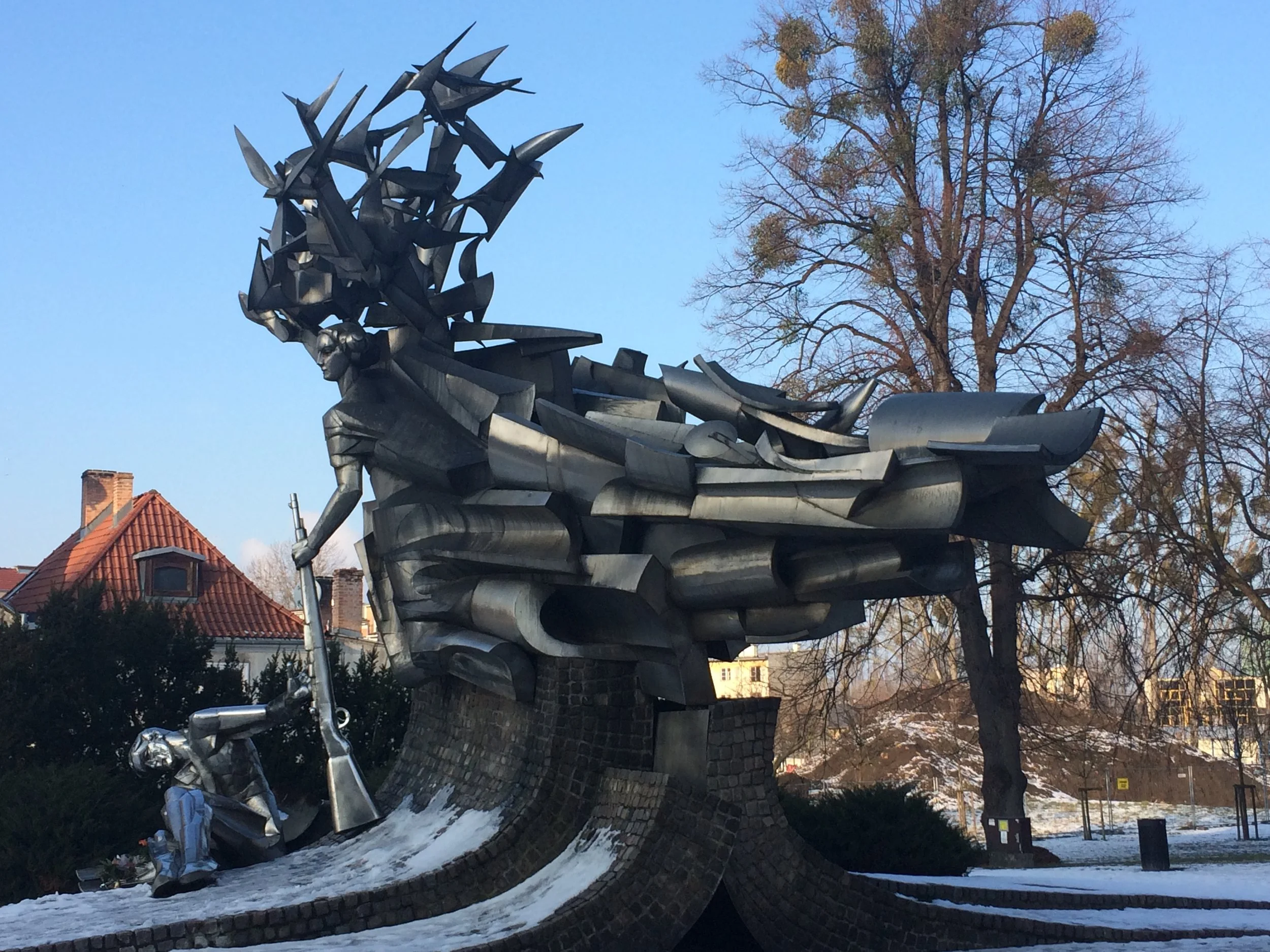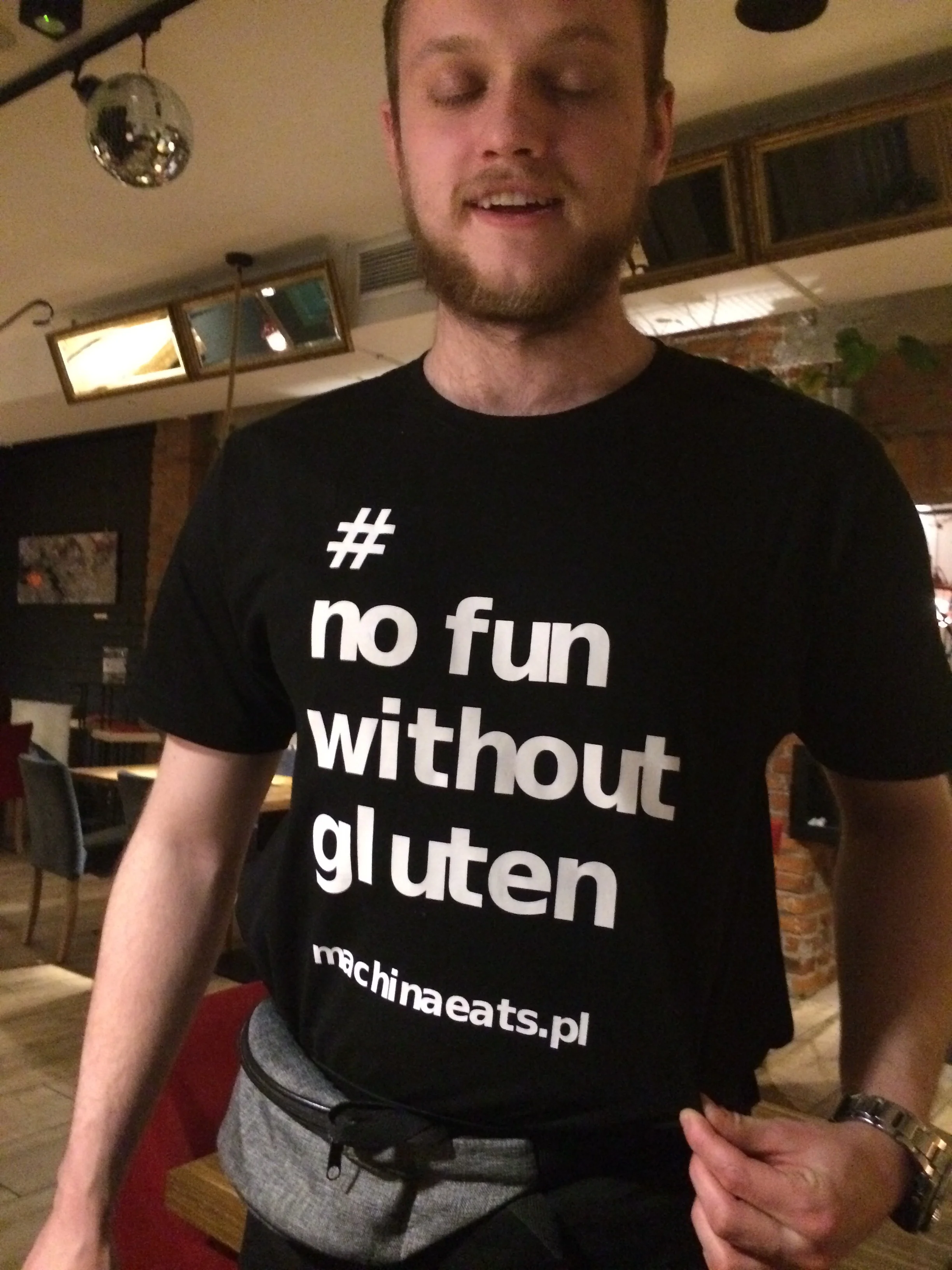What the hell is an American Pale Ale, and does it taste like Budweiser!!???
Makin’ Gingerbread
The Gingerbread Witch
Next Stop, Toruń
On Friday we were in Toruń, a sweet old town on the Vistula, best known for its gingerbread... Or, if we're splitting hairs, pepperbread (pierniki toruńskie), because in Toruń they add black pepper, which is not in the usual gingerbread you're used to.
They have a museum, where we took a class and actually made gingerbread ourselves.
We finished the day having pierogi -- but this time I chose the baked version -- and Killer Polish Beers (KPB).
Lining up for fabulous bread
The birthplace of Copernicus
KPB
Malbork Castle 5
Grand Masters of old
Malbork Castle 4
Malbork Castle 3
Ceiling
Central heating
Confession, anyone?
Malbork Castle 2
Indoor loo
Malbork Castle
Malbork Train Station
On to Malbork
On Thursday we caught an early train to Malbork, which is only about 30 minutes from Gdansk. It's the home of the largest brick castle in the world.
More a "fortress" than a "castle", Malbork Castle is half the size of the Vatican and was the home of the Grand Master of the Teutonic Knights, who had been charged by the Pope to civilize and bring God to the pagans living in (what is now) northern Poland.
The audio guided tour was 3.5 hours!!! Up staircases and across moats and through courtyards we went.
There were different living sections for different groups -- the Grand Master and his guests, the knights, and the monks. Each section had a large kitchen with a fireplace for cooking which was the size of my US bedroom! Each of the sections had its own dining room, sleeping areas, and area for relaxing.
There were stables housing hundreds of horses. There was a monastery and several chapels and churches. Central heating was achieved using metal tubes/grates leading from the furnaces to the floors above. The head chef and the Grand Master even had ensuite toilets!
We saw rooms full of chain mail, armor and weaponry, and we followed the progression of the weaponry as it became more sophisticated.
The castle was heavily damaged during the war, and has been reconstructed in its former style.
Fun tip! The knights were instructed in their rules to sleep in a large common room, on the floor, fully clothed, and the room should be always lighted. (Hmmmm)
The city itself is not much, so just stop in there, leave your bags at the train station, see the castle, and then continue on your journey. Five to 6 hours tops, including a nice Polish meal.
In mortification
In a souvenir shop in Gdańsk I saw a rack of masks of politicians from around the world. Un, Merkel, Macron... I spun and spun, looking for the cheetah, but didn’t find him... “whew!”, I’m thinking.
Only to notice, at the very bottom, an empty slot... It was the slot for The Donald... he was all sold out.
(Sigh)
In mourning
January was a month of mourning for the city of Gdańsk, because of their slain mayor Paweł Adamowicz.
Goodbye Gdańsk
Final photos of Gdansk
In a post office... not THE post office
As always, please enjoy the beauty of the objects, while tolerating the lack of skill of the photographer
A typical feature of the Old Gdansk architecture near the water are downspouts that carry rain off the roof, past the big porch in front, and to the sidewalk. They are usually made to look like sea monsters.
Another symbol of Gdansk is Neptune.
The Black Pearl
There is a restaurant in Gdansk on a ship. The Black Pearl looks like a pirate ship. Apparently it even leaves it's docking space and takes a cruise!! Who knew!
Visiting the Post Office
We stopped in for our noon-ish pastry and hot chocolate before we hit the Post Office Museum.
There was some really cool art outside.
By this point I'm totally over WWII.
We finished our day with pasta and killer Polish beer at Machina — where it’s #nofunwithoutgluten
Visiting Westerplatte
On Wednesday we headed out early to catch city bus 106 to Westerplatte, the site of the Polish troop transport site. The sky was steel and it was cold. There was no hint of the warming sun we'd seen the day before.
Heading out of the city we drove through rural areas trying to become office parks, with port on the left side and forest on the right, and I could almost see soldiers crouching through the trees.
We disembarked at the end of the 106 route and checked the timetable to be sure we understand when we could leave. Assuming this was a big park and museum we decided we'd stay 2.5 hours -- catching the second bus back into town.
As we walked along it became clear that there was really not much left of the garrison buildings. The clandestine fortifications the Poles had made were successful, and protected their troops during the shelling and even the bombing. A bombed building is left which we were able to walk through.
Also a monument has been installed at the highest point right at the water. It's pretty impressive.
There is no museum building on site, though construction seems to be starting on one... it was effin cold and even the bathrooms were closed for the winter. So after a sprint through the grounds, reading every plaque, we hustled back to the stop to catch the first bus back into the city.
A beginning... and an end
On dawn Sept 1, 1939, almost simultaneous attacks were launched on the Polish Army garrison at Westerplatte and the Polish Post Office inside the city of Danzig.
The first day a German ship in the harbor shelled the base for hours. On subsequent days they bombed from the skies. The Poles in Westerplatte held out for 7 days before surrendering.
The Polish Post Office workers defended their building for 15 hours, and were subsequently convicted as illegal combatants and executed by the German invaders.
September 1, 1939 - Attacks at Westerplatte and the Post Office signal the beginning invasion (of Poland) by Germany
September 7, 1939 - The Polish garrison at Westerplatte surrenders
September 17, 1939 - The Soviets invade Poland from the East (following secret agreement with Germany)
September 30, 1939 - Polish government-in-exile was established in Paris and Hitler issued Directive Number 5, the partition of Poland between Germany and the USSR.
And so the Second Polish Republic existed from 1918 to 1939.
Lead up to war
Here's a little background on the state of affairs in Poland before WWII. In 1795, Poland was completely partitioned among the Kingdom of Prussia (Germany), Russia, and Austria. From 1795 until the end of WWI and the Treaty of Versailles, Poland did not exist. The Treaty of Versailles created the Second Polish Republic in 1918.
Another term from the Treaty of Versailles was to establish Danzig (Gdansk, which had been in Germany during the century of Polish non-existence) as a Free City. [My understanding is that this was done to allow more countries than just Germany access to the Baltic Sea and shipping. I could be wrong, it’s happened twice before.] Under the regulations of this free city, Poland would represent the Free City of Danzig in international affairs, Poland would be able to establish a base for military transport at the port, and Poland would have a Post Office within the city for servicing Polish mail and telegraph needs.
At the time (roughly 1920s) Danzig was 90% German-heritage and 10% Polish. It was not a comfortable co-habitation. The Germans considered Poles inferior, and they were vocal about this belief.
During the 1920s and early 1930s, as the Nazis were gaining strength and spreading throughout Germany, Nazi organizations were also being created within the FC Danzig, adding to the persecution of the Slavic Poles. In 1933 the Nazi party won the majority of seats in the governing body of FC Danzig.
In 1934, after Hitler gained the role of Fuhrer, Germany and Poland experienced a rare thawing of relations with the signing of the German-Polish Non-Aggression Pact. This was soon following by Hitler approaching the powers that be. 'Let's do away with all this "Free City" nonsense. Danzig is a German city with a German population. Everyone will be happier if Danzig is once again in The Reich.'
Everyone but POLAND, who said no, no, no. So the status quo was to remain, and Hitler took his ball and went home. Where he fumed and plotted. And made some backdoor deals.
The entire world could feel the tension, and Europe prepared mentally for war. Poland, who was allowed the military transport site at the dock of Danzig -- but through the terms of the treaty was not allowed to improve the site -- worked secretly for three years during the 1930s to fortify the buildings in preparation for attack.
Persecution of the Poles in the FC of Danzig increased during the 1930s. The Post Office was forced to employ a two man team on each mail route -- the mail carrier, and an armed guard (a practice that was heartily ridiculed in the Danzig German press). The Postal Officers (whose job titles actually were military titles) began secretly training with weaponry.
Everyone knew something was going to happen, and it was even stated by the British First Lord of the Admiralty Alfred Duff Cooper, "It is likely that the first shots of the war will be fired here."




















































































































